Understanding Dental Crowns and Posts
Purpose of Dental Crowns
Dental crowns play a vital role in restorative dentistry by providing protection and support to damaged teeth. They help prevent further deterioration and can save a tooth from extraction, contributing to a healthier mouth overall. Crowns also restore the aesthetic appearance of teeth, which can significantly boost a patient’s self-confidence and quality of life (Z Dentistry).
The key functions of dental crowns include:
- Restoring broken or chipped teeth
- Replacing severely decayed teeth
- Covering discolored teeth to improve aesthetics
- Replacing missing teeth as part of a dental bridge
- Supporting teeth following a root canal treatment
These benefits illustrate the reliability and long-lasting effects of crowns in maintaining oral health (Glen Burnie Dental Group).
Types of Dental Crown Materials
Several materials are utilized in the fabrication of dental crowns, and the choice of material often reflects personal preference, budget, and specific dental health goals. The main types of dental crown materials include:
| Crown Material | Description | Cost Range |
|---|---|---|
| Metal Crowns | Durable and long-lasting; less natural appearance. | Lower end of the spectrum |
| Porcelain-Fused-to-Metal Crowns | Combine aesthetics with strength; ideal for back teeth. | Moderate to high cost |
| All-Ceramic Crowns | Provide excellent aesthetics and are ideal for front teeth. | $1,000 – $3,500 per tooth |
| Pressed Ceramic Crowns | Made from a solid ceramic material; provide a natural look with durability. | $1,200 – $3,500 per tooth |
| Same-Day Crowns | Convenient option that can be completed in one appointment, typically utilizing a special machine. | Varies based on provider |
| All-Resin Crowns | Typically less expensive but wear down quicker. | Lower to moderate cost |
Metal and stainless steel crowns are often the most affordable but offer less natural appearance and durability than other types. Porcelain and ceramic crowns are known for their aesthetic appeal and longevity, but costs can be quite high, reaching up to $3,500 per tooth (Humana).
Exploring your options with dental professionals can help ensure you find the right crown material that fits your needs and insurance coverage, including options such as dental crowns and implants covered by bcbs or through other providers.
Factors Affecting Dental Crown Costs
Understanding the costs associated with dental crowns is crucial for planning your dental care effectively. Several factors play a role in determining the overall cost, including the considerations of the procedure itself and the details of any insurance coverage you may have.
Cost Considerations
The price of a dental crown can vary significantly based on several factors. The material used is one of the primary determinants, with costs ranging from $500 to $3,500 per tooth. Generally, metal crowns are more affordable, while porcelain and ceramic crowns tend to be more expensive due to their durability and aesthetic appeal. The following table summarizes the approximate cost based on material types:
| Crown Material | Average Cost Range |
|---|---|
| Metal | $500 – $1,500 |
| Porcelain | $1,000 – $3,500 |
| Ceramic | $1,000 – $3,500 |
| Composite | $300 – $1,500 |
The installation process may also impact cost. It often requires two visits to the dentist, although some providers offer same-day installations using advanced technology. This convenience may come at a higher cost.
For a personalized estimate and details about possible payment plans, consult with your dentist.
Insurance Coverage Details
When it comes to insurance, many plans will cover a portion of the costs associated with dental crowns. Typically, major restorative dental care is covered at about 50%, although this can vary by specific insurance provider and plan.
Many private dental insurance policies include:
- Deductibles that must be met before coverage begins.
- Annual coverage limits ranging from $1,000 to $2,500, which can affect your out-of-pocket expenses.
It’s crucial to review your dental insurance policy thoroughly to understand the specifics of your coverage, including any waiting periods for major care procedures like crowns. For detailed insights into coverage specific to your plan, reach out directly to your insurance carrier. For example, check options like Blue Cross Blue Shield, MetLife, or other providers that offer various forms of coverage.
Arming yourself with knowledge about costs and insurance specifics can help you navigate your dental care with confidence. For additional information on coverage related to dental implants and restorative services, explore the relevant links within this article.
Dental Insurance Coverage for Crowns
Navigating the intricacies of dental insurance coverage can be challenging, especially regarding crowns. Understanding the nuances can help you maximize your benefits and minimize out-of-pocket costs.
Coverage Details
Dental insurance typically covers crowns at a rate of 50% when the procedure is done for health reasons rather than purely cosmetic purposes. This coverage falls under major procedures alongside bridges, inlays, and dentures, which are usually treated similarly in terms of coverage (Investopedia).
It’s essential to note that different insurance plans may have unique specifications regarding coverage. Here are a few critical aspects of what to expect:
| Coverage Aspect | Details |
|---|---|
| Coverage Percentage | Typically 50% for medically necessary crowns |
| Waiting Periods | Can range from a few months to over a year |
| Deductibles | May apply depending on your plan |
| In-Network vs. Out-of-Network | Coverage may vary significantly |
Consulting your insurance provider directly is advised to comprehend the level of coverage specific to your plan (Humana).
Insurance Providers Offering Coverage
A majority of comprehensive dental insurance plans provide some level of coverage for crowns. Below are a few notable providers that typically cover dental crowns, especially under major restorative services:
| Insurance Provider | Coverage Details |
|---|---|
| Blue Cross Blue Shield | Covers medically necessary crowns at around 50% |
| MetLife | Offers coverage for crowns alongside major dental care |
| Aetna | Provides dental restoration services with coverage for crowns |
| Delta Dental | Includes crowns and implants within their major restoration benefits |
| UnitedHealthcare | Covers some portions of dental crowns under certain plans |
Be sure to verify with your provider for specifics, as coverage details can differ based on the plan you hold. Understanding your dental insurance coverage for crowns ensures you make informed decisions regarding your dental health choices. For further assistance, consider exploring our resources on dental implant treatment covered by Aetna or insurance-covered dental implant consultation.
Dental Crown Installation Process
Understanding the installation process for dental crowns is essential for anyone considering this restorative procedure. It typically involves several steps and can require multiple visits to your dentist.
Steps Involved in Installation
The process of getting a dental crown generally includes the following steps:
-
Initial Examination: Your dentist will examine the affected tooth to determine the necessity of a crown. This may include X-rays to assess the tooth’s health and roots.
-
Tooth Preparation: The dentist will prepare the tooth by removing any decayed portions and filing down the enamel, creating space for the crown.
-
Impression Making: After shaping the tooth, an impression will be taken. This can be done using a traditional molding substance or a digital scanner if your dentist uses modern technology.
-
Temporary Crown Placement: Once the impression is made, a temporary crown will be placed to protect the tooth until the permanent crown is ready.
-
Creation of Permanent Crown: The impressions are sent to a dental lab where the permanent crown is created. This typically takes about a week to 10 days.
-
Final Crown Placement: During your second visit, the temporary crown is removed, and the permanent crown is cemented in place. Adjustments may be made for optimal fit and comfort.
| Step Number | Procedure | Duration |
|---|---|---|
| 1 | Initial Examination | 15-30 minutes |
| 2 | Tooth Preparation | 30-45 minutes |
| 3 | Impression Making | 15-20 minutes |
| 4 | Temporary Crown Placement | 15 minutes |
| 5 | Creation of Permanent Crown | 7-10 days (laboratory time) |
| 6 | Final Crown Placement | 30-45 minutes |
For more detailed information, you can refer to our article on insurance-covered dental implant consultation.
Timeline for Permanent Crown Placement
Once the initial tooth preparation is complete, the timeline for placing a permanent crown typically ranges from one week to 10 days. During this period, the temporary crown will guard your tooth against sensitivity and further damage.
Some dental practices offer same-day crown installations using advanced technology, which can expedite the process. However, this may come at a higher cost compared to traditional methods that require a laboratory to fabricate the crown. If you are interested in this option, discuss it with your dentist to see what is available.
Understanding the installation process and timeline helps you prepare for the journey toward restoring your smile with a durable and aesthetically pleasing crown. Ensure that you check if your specific procedure is covered under your post and crown dental insurance coverage for maximum benefits.
Longevity and Maintenance of Crowns
Understanding the longevity and maintenance of dental crowns is essential for preserving your investment in oral health. Here, you will learn about the expected lifespan of your dental crowns and the best practices for maintaining them.
Lifespan of Dental Crowns
Dental crowns are designed to be durable and can last significantly long with proper care. The average lifespan of a dental crown ranges from five to 15 years. However, with excellent maintenance, crowns can last upwards of 30 years (Cleveland Clinic). The longevity depends on factors such as the material of the crown, your dental hygiene practices, and the overall health of your teeth.
| Crown Material | Lifespan (Years) | Cost Range Per Tooth |
|---|---|---|
| Metal | 5 – 10 | $500 – $1,500 |
| Porcelain | 10 – 15 | $1,000 – $3,500 |
| Ceramic | 10 – 15 | $1,000 – $3,500 |
| Stainless Steel | 5 – 10 | $500 – $1,000 |
The cost of dental crowns varies greatly based on the material used. For instance, metal crowns are typically the least expensive but may not provide the most natural appearance, while porcelain and ceramic crowns, though more costly, offer aesthetics that closely mimic natural teeth (Humana).
Care and Maintenance Tips
Maintaining your dental crowns is vital for ensuring their longevity. Here are some effective care tips to keep in mind:
-
Practice Good Oral Hygiene: Brush your teeth at least twice a day and floss regularly. This keeps the gums healthy and helps prevent plaque buildup around the crown.
-
Use a Soft-Bristled Toothbrush: A soft-bristled toothbrush will be gentler on your crowns and any surrounding natural teeth.
-
Avoid Hard Foods: Hard candies, ice, and other hard objects can crack or damage crowns. Opt for softer foods when possible.
-
Regular Dental Checkups: Schedule routine visits with your dentist to monitor the condition of your crowns and detect any potential issues early on.
-
Consider a Mouthguard: If you grind your teeth at night, talk to your dentist about getting a mouthguard. This can help protect your crowns from excessive wear.
By adhering to these care practices, you can enjoy the benefits of your dental crowns for many years, ensuring that they remain functional and aesthetically pleasing. If you have questions about your post and crown dental insurance coverage, discuss them with your dental provider to ensure you’re maximizing your benefits for maintenance and necessary replacements.
Alternative Financing Options
Affording dental services like crowns can sometimes pose challenges, even for affluent professionals. Understanding available financing options is vital in ensuring you receive the necessary care without financial stress.
Payment Methods
Several payment methods can facilitate your financial planning when it comes to dental treatments. These include:
| Payment Method | Description |
|---|---|
| Cash Payment | Direct payment can sometimes lead to discounts. |
| Credit Cards | Flexibility to pay over time, though interest may apply. |
| Health Savings Accounts (HSAs) | Pre-tax savings specifically for health expenses. |
| Flexible Spending Accounts (FSAs) | Allows you to use pre-tax income for healthcare costs. |
These methods offer flexibility, but it’s best to check whether specific providers accept your preferred payment options.
Dental Credit Plans and Payment Plans
Dental credit plans are specifically designed to help patients finance dental care. These plans typically offer:
- No Interest Financing: Some plans allow you to split costs over time without interest charges.
- Low-Interest Loans: For those who might need extended payment periods.
- Instant Approval: Many plans offer quick applications and immediate credit decisions.
Payment plans provided by dental practitioners also enable patients to pay for treatments in installments, making expensive procedures like crowns more manageable.
Here’s a comparison of two popular options:
| Plan Type | Features |
|---|---|
| CareCredit | No-interest financing for a specified term; widely accepted at dental practices. |
| LendingClub | Offers low-interest loans with flexible payment options; funding can be used for multiple services. |
Using these financing options can ensure that you receive the dental care you need, including crowns and other restorative treatments. Moreover, with dental insurance often covering a percentage of the costs, you can combine your insurance with these financing plans to lessen your immediate financial burden. For more information on insurance coverage, see our sections on post and crown dental insurance coverage to understand better how to navigate your options.








